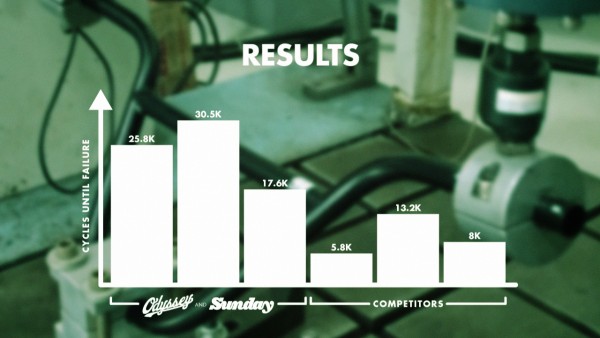2016 Stampy Handlebar Test
As part of our mission to make the best BMX parts possible, we continue to refine the 41-Thermal® process at all stages of manufacturing. Each step in the process is held under strict scrutiny, and we continue to examine the strength and durability of all our parts.
In our previous Stampy tests, we have blown away the industry standard “EN tests” for forks and cranks, and now it’s time to take a look at handlebars. In our latest test, we have taken bars with very similar height, width, and sweep dimensions, and tried to replicate a lifetime of nose-diving into the ground and pulling up on the bars for a sprint to gain speed in a confined space.
The Stampy handlebar rig drives down on the grip sections right where your hands would be with 1000N (that is about 225 pounds of force) per side, and then pulls back up with another 1000N (225lb). It drives down at a 45 degree angle, just like you would in real life. However, unlike a real rider, the Stampy rig can do this 18,000 times per hour, for as long as it takes to break the handlebar. To get an idea of what that’s like, you can fill a backpack with bricks until you weigh 225 pounds and then attempt to do 30,000 one-arm push-ups, and 30,000 one-arm pull-ups.
As expected, when we tested our bars against our competitor’s bars that had similar geometry, we outperformed them once again. Our worst bar was 33% better than the best of the rest, and our best bar was over 400% more durable than the worst. So remember, when you are buying bars, although they may look very similar, they are not all “the same”.
When you see how hard we push to make the best parts; to make them better and better every chance we get, it is easy to understand why our legendary lifetime warranty against bending and breaking is still around 17 years after we first introduced it. And when you see the contrast between our bars and our competitors, you can also quickly see why most of their warranties have long since been quietly canceled or modified with complicated terms and conditions that usually limit the warranty to manufacturing defects alone.



